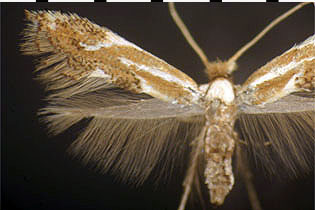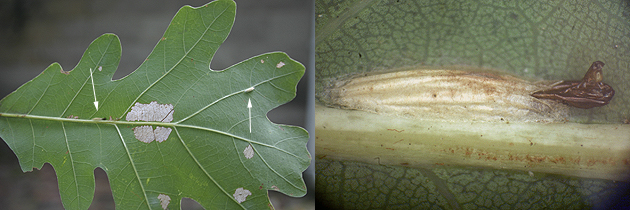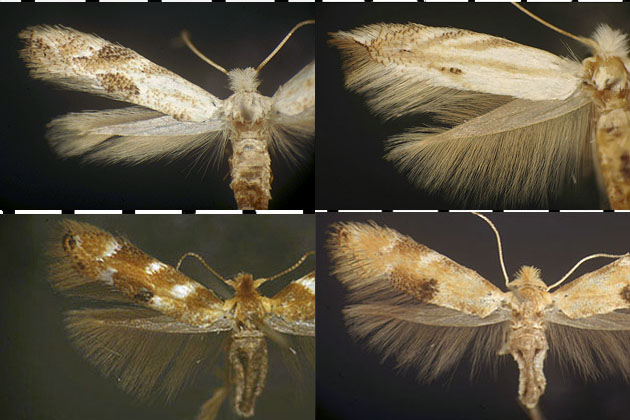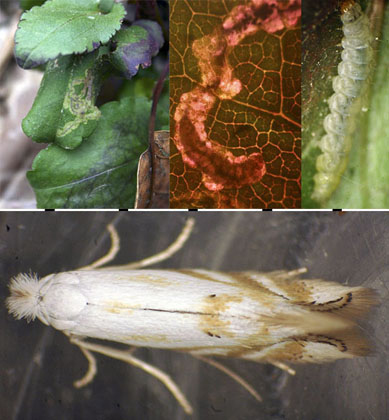
Figure 1. Philonome clemensella. Adult, collected at light.
"Lyonetiidae" in the 1983 checklist included the tineoid/gracillarioid-allied groups Bucculatricidae, which is covered on this page, and Bedelliidae, and also the yponomeutoid family Lyonetiidae (as defined on basis of the genus Lyonetia).
Three species of Philonome are listed for North America. Of them, Philonome clemensella (Fig. 1) occurs in Illinois. According to Forbes (1923), the larva feeds on hickory, Carya sp. (Juglandaceae) and linden, Tilia americana (Tiliaceae). The adult, which is very similar to Bucculatrix (see below) in all structural aspects, is common at light in central Illinois in late June and early July, in deciduous forest.

Figure 1. Philonome clemensella. Adult, collected at light.
Bucculatrix, with approximately 100 described Nearctic species, is by far the largest component of Bucculatricidae. The North American species were treated by Braun (1963). Larvae of some species are leaf skeletonizers on woody plants, e.g., oaks, Quercus spp. (Fagaceae); others are leaf miners or stem gall inducers on composites (Asteraceae), including asters (formerly Aster spp.). The cocoon of Bucculatrix (Fig. 2) presents a distinctive "ribbed" appearance. The pupal exuvium is protruded from the cocoon upon eclosion. The adult moths (Fig. 3) are small and usually somewhat colorful, with a prominent tuft of erect hairlike scales on the head, and often with a patch of raised black scales at about half the length of the posterior margin of the forewing. In central Illinois, adults of some of the oak-feeding species are common at light in deciduous forest during late June and early July.

Figure 2. Bucculatrix sp. Left: two cocoons (at arrows) on underside of leaf of white oak, Quercus alba (Fagaceae); right: closeup of one of the cocoons, showing the distinctive longitudinally-ribbed surface; also seen is the protruded pupal exuvium, which indicates that the adult moth has already emerged from this cocoon.

Figure 3. Bucculatrix spp. Adults, collected at light.
The larva of Bucculatrix staintonella (Fig. 4) makes a full-depth track mine in the new leaf of heartleaf aster, Symphyotrichum cordifolium (formerly Aster cordifolius) (Asteraceae), very early in the growing season (the example shown here was photographed on 21 March, central Illinois). The plant occurs in deciduous forest; leaf mines of B. staintonella are found most frequently in low-lying areas, rather than in uplands. After the larva finishes feeding, it leaves the mine and spins a ribbed cocoon inside which it pupates, as is typical for the genus. There is one generation per year. The adult shown here pupated in late March but did not emerge until 10 May.

Figure 4. Bucculatrix staintonella. Top: left, leaf mine on heartleaf aster, Symphyotrichum cordifolium (Asteraceae), in situ; center, closeup of larva in leaf mine; right, larva (removed from leaf mine); bottom: adult.